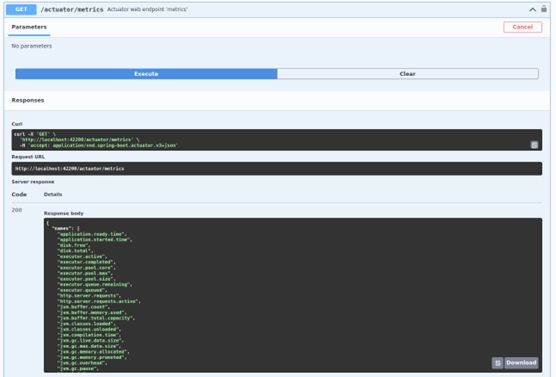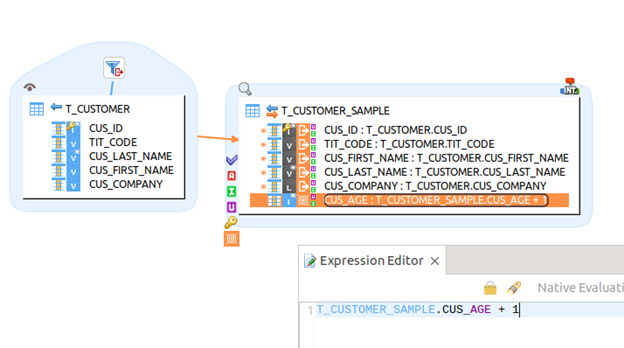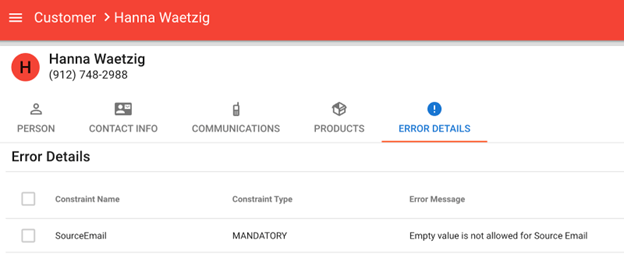Semarchy 2024.1 in brief
Semarchy xDI and xDM 2024.1 consolidate features introduced during the 2023.x release cycle. Please have a look at our previous announcements of each Mainstream release (2023.2, 2023.3, and 2023.4). More details on changes made throughout the year are available in the documentation.
In addition to this consolidation, we have also included some new features in Semarchy 2024.1
xDI 2024.1 Feature Highlights
xDM 2024.1 Feature Highlights
Semarchy 2024.1 in detail
Semarchy xDI
Serializers
Previous versions of Semarchy xDI introduced deserializers, which aid users in integrating semi-structured data (i.e. JSON, XML). In this release, we are introducing serializers, which do the opposite: transform and integrate complex hierarchical data structures into single text columns.

Users can add serializers to mappings in the same intuitive drag-and-drop manner, following fluid prompts to configure how the serializer functions. Serializers for JSON as RDBMS Strings are available in this release.
Runtime metrics, monitoring, and health check
Semarchy xDI 2024.1 adds the ability to monitor the Runtime with metrics and health information. This provides visibility of the xDI infrastructure, allowing administrators to detect bottlenecks and possible sources of issues.

Expressions with target data
Users can now use columns from target datastores in mapping expressions when their execution location is set to Target. This feature allows for data manipulation and processing after data has reached its target, removing some previous processing limitations.

New and updated connectors
Semarchy xDI 2024.1 brings initial support for Azure Service Bus, a cloud messaging system for connecting apps and devices across public and private clouds. Furthermore, this release adds support for Azure Cosmos DB, allowing you to integrate Microsoft’s multi-model database service with any source or target technology supported by xDI. This new connector supports the MongoDB and PostgreSQL data models.
Semarchy xDI 2024.1 introduces support for the Snowpipe Streaming API in the Snowflake connector, making it possible to continuously stream rows of data into Snowflake tables, and supports version 8 of Elasticsearch.
Semarchy xDM
User-friendly validation messages in error views
Effectively communicating when an error occurs while authoring or editing a record is the first step in detecting and then correcting those errors.
When browsing records with errors, the Error Details tab in a business view now displays meaningful and detailed error messages for each listed error—in addition to the constraint type and constraint name for built-in errors—and provides the ability to switch between list and table views for comprehensive error details.

When querying error views using the REST API, the API response now includes a ConstraintErrorMessage attribute that contains either the customized or default error message associated with the error records.
These improvements to error messages reinforce the capacity of data stewards to design effective error communication. The increased clarity augments the ability of business users to act on them, facilitating the correction of errors in records.
User workflow and task history
Workflows allow collaboration across the organization for managing data. The introduction of the History feature provides the user with visibility of workflows that they have initiated and/or completed.
Within My Tasks, the My Workflows section has been replaced with a new History feature that incorporates two distinct views:
-
- The Workflows I Initiated view shows all workflows initiated by the current user. Detailed information—including workflow description, status, dates, assignees, and more—is presented in a structured table.
-
- The My Completed Workflow Tasks view provides insights into tasks performed by the current user. Users can access comprehensive details such as a task description and completion date, or its related workflow status and progress, as well as records processed during the task.
Both views offer advanced search filters, enabling users to efficiently explore completed tasks and initiated workflows based on criteria like workflow ID, keywords found in the description, workflow name, status, date or time frame, and assignee.

User preferences and custom view options persist across sessions, ensuring a consistently personalized experience every time users access the History section.
REST API documentation
The REST API documentation has been updated to better handle large models, now organizing data location sections by entity. This improvement introduces a sub-menu for entity selection with enhanced search functionality and allows downloading the API documentation for specific entities.
About Semarchy’s Unified Data Platform
Semarchy, a leader in the master data management and data integration market, enables organizations to rapidly generate business value from their data in as little as 12 weeks. Its unified data platform (xDM + xDI) enables organizations of any size to discover, integrate, enrich, manage, govern, and report critical information scattered across siloed systems.
Semarchy is available on-prem and natively deployable on popular cloud marketplaces such as Microsoft Azure, Amazon Web Services (AWS), and Google Cloud Platform (GCP) or managed as a service supported by a rich ecosystem of software-as-a-service (SaaS) and professional service partners.
We’re Evolving How We Innovate
As a (proven) customer-obsessed company, we’re excited about our regular, quarterly platform release updates for both xDM and xDI. Our clients are data leaders, this commitment will continuously support their strategy. Read more about our xDI and platform release & maintenance cadence updates.
Explore Semarchy 2024.1
Share this post
Featured Resources
No featured post selected.






















































